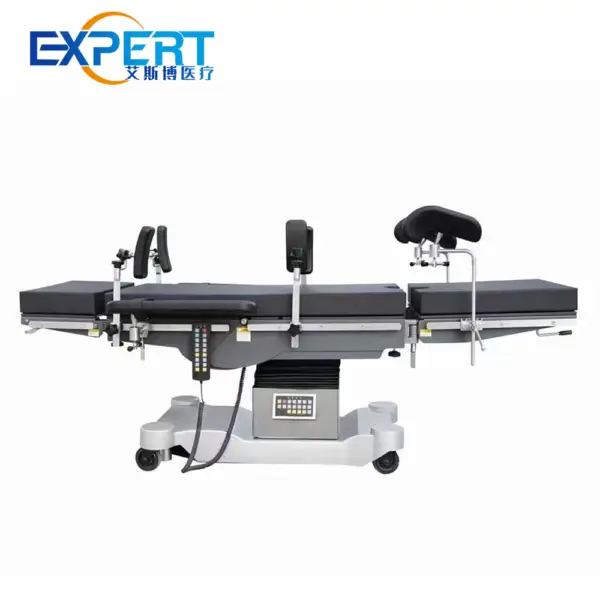عنوان
304 شارع الكاردينال الشمالي
مركز دورتشستر ، ماساتشوستس 02124
ساعات العمل
من الاثنين إلى الجمعة: 7 صباحًا - 7 مساءً
عطلة نهاية الأسبوع: 10 صباحًا - 5 مساءً
-600x600-1.webp)
أحدثت طاولات العمليات المتنقلة ثورة في العمليات الجراحية من خلال توفير مرونة وراحة غير مسبوقة. على عكس الطاولات الثابتة التقليدية، تم تصميم طاولات العمليات المتنقلة للتكيف مع المتطلبات السريرية المختلفة، مما يتيح لمقدمي الرعاية الصحية تحسين كفاءة سير العمل مع ضمان سلامة المرضى وراحتهم.
The concept of operating tables dates back centuries, with rudimentary forms used in ancient civilizations. However, it was not until the 19th century that modern operating tables began to emerge, incorporating adjustable features for patient positioning during surgery. The evolution continued, leading to the development of mobile operating tables equipped with advanced functionalities.
Mobile operating tables offer several distinct advantages over their traditional counterparts:
Effective workflow management is essential for optimizing surgical outcomes and resource utilization. Mobile operating tables play a pivotal role in streamlining workflow processes by:
Several healthcare institutions have reported significant improvements in operational efficiency following the implementation of mobile operating tables. Case studies have highlighted:
The future of mobile operating tables is characterized by ongoing advancements and innovations aimed at further enhancing efficiency and patient care. Key trends include:

| ميزة | وصف |
|---|---|
| المرونة | Equipped with wheels or casters for easy transportation within surgical suites and between departments. |
| قابلية التعديل | Multiple adjustable components including height, tilt, and lateral tilt for optimal patient positioning. |
| Space Optimization | Maximizes space utilization within operating rooms, minimizing clutter and improving accessibility. |
| التوافق | Compatible with a wide range of surgical accessories and equipment, enhancing versatility and integration. |
| Enhanced Workflow | Streamlines workflow processes by facilitating patient transfer, promoting team collaboration, and reducing turnaround times. |
ختاماً، mobile operating tables represent a paradigm shift in surgical settings, offering unparalleled flexibility, adaptability, and efficiency. By streamlining workflow processes, enhancing patient care, and fostering innovation, mobile tables are poised to play an increasingly vital role in the future of healthcare delivery.
س: ما هي mobile operating tables?
A:Mobile operating tables are specialized medical devices designed to facilitate patient positioning and support during surgical procedures. Unlike traditional fixed tables, mobile tables are equipped with wheels or casters, allowing easy transportation within healthcare facilities.
Q:What are the benefits of mobile operating tables?
A:Mobile operating tables offer several benefits, including flexibility, adjustability, space optimization, and compatibility with surgical accessories. These features contribute to enhanced workflow management, improved patient care, and operational efficiency.
س: كيف افعل mobile operating tables improve efficiency?
A:Mobile operating tables streamline workflow processes by facilitating patient transfer, promoting team collaboration, and reducing turnaround times between surgeries. These efficiency improvements lead to shorter procedure times, increased throughput, and cost savings for healthcare facilities.
Q:What are the future trends in mobile operating tables?
A:Future trends in mobile operating tables include the integration of technology, enhanced ergonomics, and remote accessibility. These advancements aim to further enhance efficiency, patient care, and surgical outcomes in the evolving healthcare landscape.
اتصل بنا
اتصل بنا
